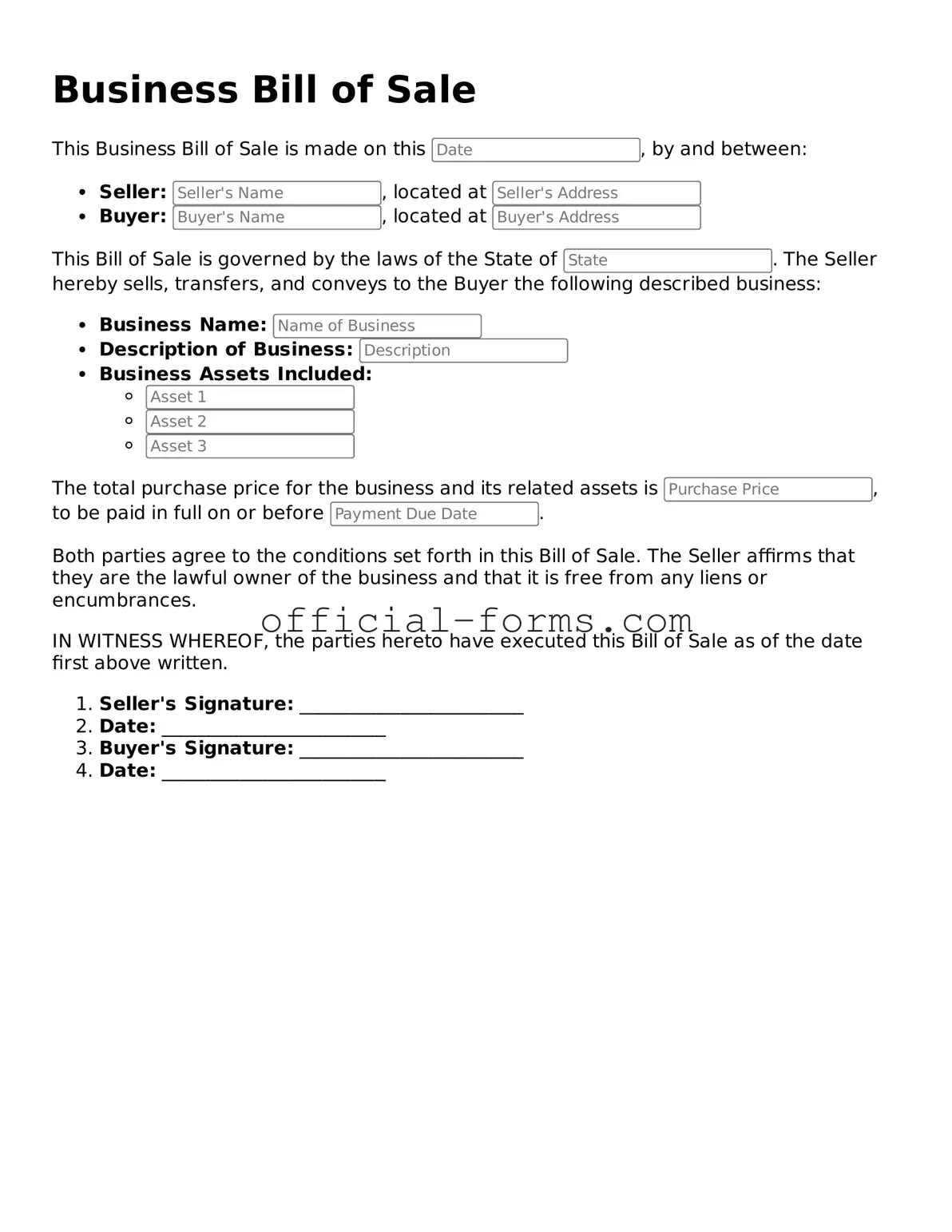Attorney-Verified Business Bill of Sale Template
A Business Bill of Sale is a legal document that records the transfer of ownership of a business or its assets from one party to another. This form serves as proof of the transaction, detailing important information about the buyer, seller, and the items being sold. Understanding its components is essential for both parties to ensure a smooth transfer and protect their interests.
Open My Business Bill of Sale Now
